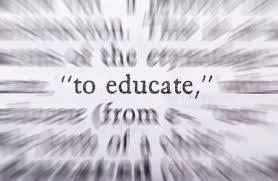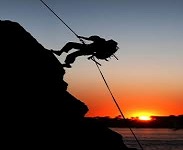Building Boards: How to Build a Brilliant Board for a Sporting Organisation.

One of the most critical initiatives any sporting organisation can undergo is the Building of the Board.
As the Board provides strategic direction, leadership and vision to the organisation, it is essential to consider the P-P-P of the Board, i.e.:
- The quality of the People who sit on the Board – who they are;
- The Professionalism of the people who sit on the Board – what skills, knowledge and experience they bring to the Board;
- The Practices of the people who sit on the Board – what they do and how they do it.
Seems simple enough, but why do so many get it so wrong?
Having dealt with sporting Boards all over the world, here are five commonly used sporting Board models that we all know do not work and are doomed to fail:
- The “this Club is my personal play-thing” Board: Happens most often in start up and new professional sporting franchises where a bunch of local business leaders (who are fans of the sport) apply for a license to start up a new team because they have lots of money and are looking for a “new toy” to play with;
- The “we have ten Member Associations so we must have ten Board members” Board: The most common Board structure in Olympic sports around the world. Also one of the biggest problems in Olympic sport around the world because everyone acts in the interest of the State, Province or group they represent;
- The “we know nothing about sport but we will have a go” Board; This Board structure pops up from time to time when sports are under financial pressure. The sport looks to recruit new Board members who are community and business leaders to drive the Board hoping they will bring in broad knowledge in marketing, finance, business practices etc. However, Board members may have little or no real understanding of the unique needs and culture of sport / the sport;
- The “we know nothing about business but we will have a go” Board: Often a transitionary sporting Board model when amateur sports turn professional and the existing Board members lack the business skills, knowledge and experience to take the sport into the new professional era;
- The “I played the sport when I was at school and know everything there is to know about the sport” Board: Another common Board model where amateurs get involved running the sport using knowledge and beliefs that may be 20 years out of date. A frustrating Board to deal with if you are a CEO or Head Coach of a professional team.
No matter what Board model you use, the critical components of a great sporting Board are:
- Vision;
- Leadership;
- Professionalism;
- Objectivity;
- The ability to think and act strategically;
- And….the commitment to keep their nose out of the daily operations of the organisation.
Without doubt, the biggest problems in sporting organisations occur when people cross the lines that define the clarity of roles and responsibilities.
You recruit players to play, coaches to coach, doctors to provide medical support and CEOs to manage – let them do their job – and let Board members do theirs – that is, to provide consistently high quality strategic leadership with real vision.
Here’s a really great 7 member Board model for sporting organisations to adopt:
- Enlist 2 people who really know the game, understand it’s nature and the unique culture of the sport – as it is today: they bring relevance;
- 2 people from within the sporting industry but outside the game itself who understand sport and what has / hasn’t worked with other sports but who are not constrained by the limitations, history and traditions of the specific sport they will be leading: they bring a broad, balanced, sports industry perspective;
- 2 people from outside of sport who understand business, finance, marketing, success and winning but who are not constrained by the limitations, history and traditions of the sporting industry; they bring objectivity, sustainability and growth;
- plus 1 real Leader – with real vision, understanding, knowledge and passion to see the sport become the best in the world: he / she brings leadership, vision and a strategic approach to the future success of the organisation.
What do the people on your Board bring?
Wayne Goldsmith
Wayne Goldsmith
Wayne Goldsmith is a performance focused coaching professional with more than 25 years experience working with some of the world's leading athletes, coaches and teams. Wayne offers a wide range of coaching services for professional coaches, corporate executives and organizational leaders which are based on his experience delivering winning performances in high pressure sporting environments across the globe.



4 Comments
Jeremy Pryce · April 4, 2010 at 8:47 pm
Wayne!
What I value from this is the stress from detachment from the sport itself. My experience with boards is that they have too many people with relevence, so views collide and then the bickering starts. Usually, most board members who have a designated role to play (ex, marketing or finance) also have a vested interest in the sport itself and so loses their objective focus.
Wayne Goldsmith · April 10, 2010 at 7:06 pm
Thanks JP,
Agree with you. The days of entrusting the future of sport with leaders who are primarily concerned with self interest/ regional interests hopefully are over.
All sports are in competition for economic survival – they are in competition with each other for athletes, sponsors, facilities, television coverage and participants.
How can a sport possibly compete against other sports if they are spending time fighting internal political battles and managing destructive personality conflicts?The sports who have managed to align the efforts, energy and enthusiasm of athletes, coaches, managers, Clubs and the Board will win the “competition of the codes” and sustain the success of their sport – the rest will vanish into obscurity.
WG
james marshall · April 6, 2010 at 7:05 pm
heard a quote on radio yesterday from Phillip Pullman “beauracracy overcomes vision” – the bigger the board, the less likely stuff will actually get done.
Wayne Goldsmith · April 10, 2010 at 6:59 pm
Thanks James.
Most people think it is the leadership of sporting organisations who come up with the new, innovative, creative and exciting ideas but in reality most Boards actually slow down the rate of possible progress because of competing interests and a lack of real vision.
I encourage coaches and athletes to dare to be different, be unique, be unusual and drive meaningful, effective change in their own programs regardless of the actions / inactions of their sport’s governing body.
Thanks again,
WG